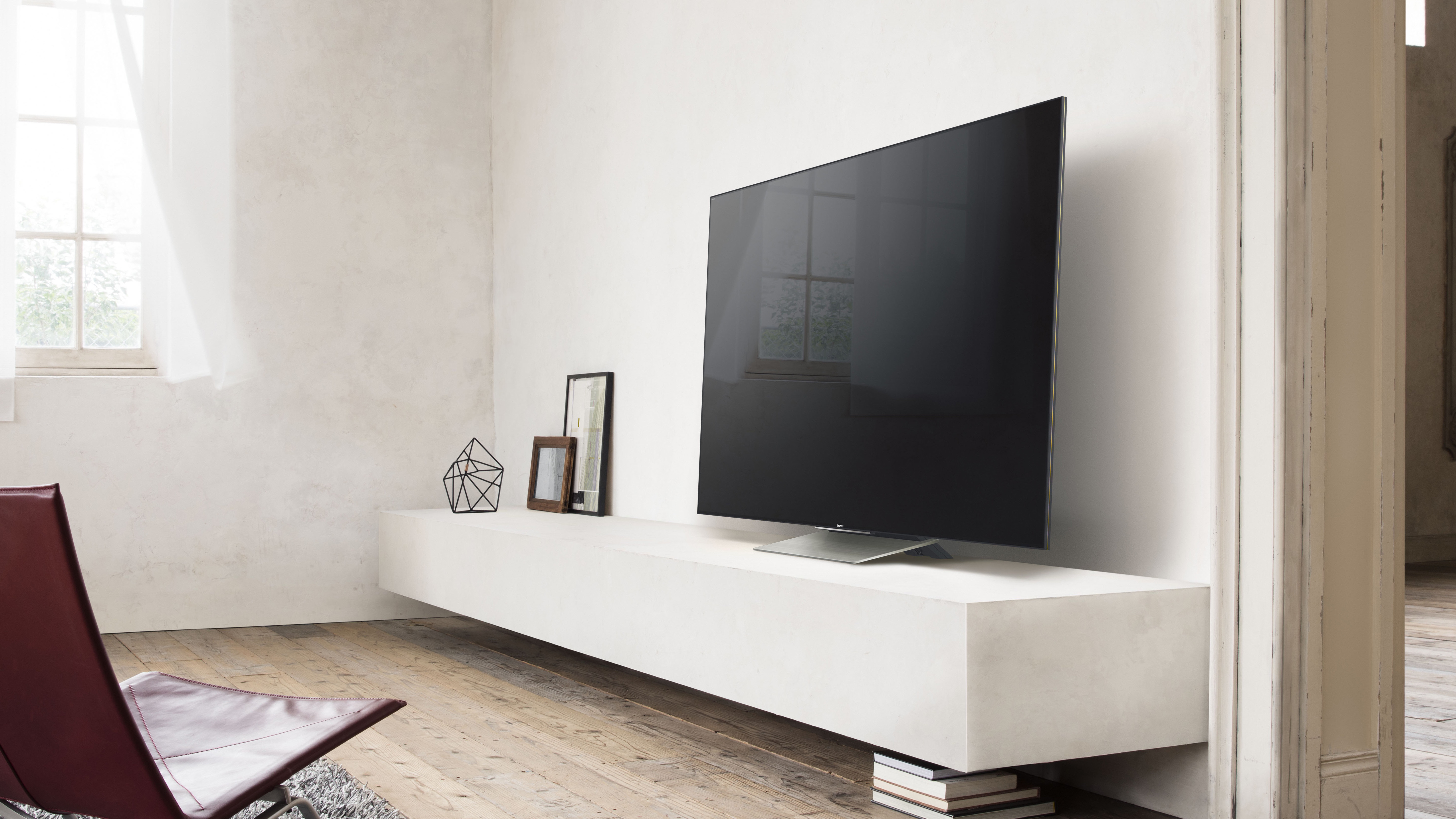TechRadar Verdict
Boasting an ultra-slim design, an innovative new type of lighting system, a native 4K resolution and playback of new high dynamic range pictures, Sony's 65-inch XBR-65X930D looks on paper like one of the year's most exciting high-end TVs. But has its focus on thinness led to too many performance compromises?
Pros
- +
Pictures often look exquisite
- +
Incredible super-slim design
- +
Lots of app choice
- +
4K HDR Netflix and Amazon
Cons
- -
Android TV can frustrate
- -
Average sound quality
- -
Some backlight blocking issues
- -
Horrible remote control
Why you can trust TechRadar
As with the top-end TVs from all the main brands this year, the Sony XBR-65X930D is obsessed with high dynamic range (HDR) video. So much so that it employs a completely new edge-lit LCD panel design reckoned to deliver the sort of lighting precision and intensity you usually only get with direct LED lighting (where the lights sit right behind the screen).
Rather prosaically dubbed the Slimline Backlight Drive, the clever trick behind the 65X930D's new lighting engine is that it puts two LCD light guide plates in sequence, each with its own separate zonal dimming capabilities. This essentially means the TV can offer twice as much local light control as typical edge LED lighting systems.
Delivering more localized light control is a big deal in the HDR world, where screens are expected to deliver huge amounts of brightness to potentially only small areas of the image without destroying the look of surrounding areas with extraneous light.
Sony is coy about exactly how much brightness its TVs can pump out, but it has stated that the 65X930D meets the specifications recommended by the recently unveiled Ultra HD Premium 'standard'. This means peak brightness levels of 1000 nits, as well as the delivery of more than 90% of the DCI-P3 digital cinema color standard; 0.05 nits of black level response; and a 10-bit rather than an 8-bit panel. All joined, of course, by a native 4K/UHD pixel count of 3840x2160.
Oddly, despite saying the 65X930D apparently being capable of receiving the Ultra HD Premium badge, Sony hasn't actually pursued Ultra HD Premium certification – despite being a member of the Ultra HD Alliance that came up with the Ultra HD Premium recommendations.
Instead, to make matters a touch more confusing, Sony has chosen to use its own 4KPro designation of HDR ability.
Design
The chassis for Sony's cutting edge new screen technology is a suitably glamorous affair. For starters, the set really is exceptionally slim round the back; especially when you consider that it has two separate light path plates in it.
Sign up for breaking news, reviews, opinion, top tech deals, and more.
The contrast between the slim black frame and the centrally mounted heavy-duty grey metal sheet stand works well, and there's an extra dash of panache in the form of a sliver of gold that runs all the way round the TV's edges to underline the point that yes, you've treated yourself to a truly premium TV.

The 65X930D's connections earn kudos for various reasons. First, all the HDMIs are built to the v2.0a specification, meaning they can take 4K HDR images at up to 60 frames per second. Next there are three USBs for playing back video, photo or music multimedia from USB drives.
You also get the now inevitable Wi-Fi and Ethernet options for accessing files on DLNA-enabled devices on your home network, or for going online with Sony's smart TV operating system: Android TV.

Android TV
Android TV apps include both the Netflix and Amazon streaming services, and it turns out that both these apps support the 4K and HDR streams both services now support. Unfortunately, though, Sony's TVs don't support Netflix's Dolby Vision option, so you only have access to the open standard HDR 10 format.
A couple of other final noteworthy features are the set's use of an improved version of Sony's X1 video processing chip - which includes new features designed to improve HDR playback - and playback of 3D Blu-rays. Sony's arch rival Samsung, by comparison, doesn't support 3D with any of its new TVs.

John has been writing about home entertainment technology for more than two decades - an especially impressive feat considering he still claims to only be 35 years old (yeah, right). In that time he’s reviewed hundreds if not thousands of TVs, projectors and speakers, and spent frankly far too long sitting by himself in a dark room.
